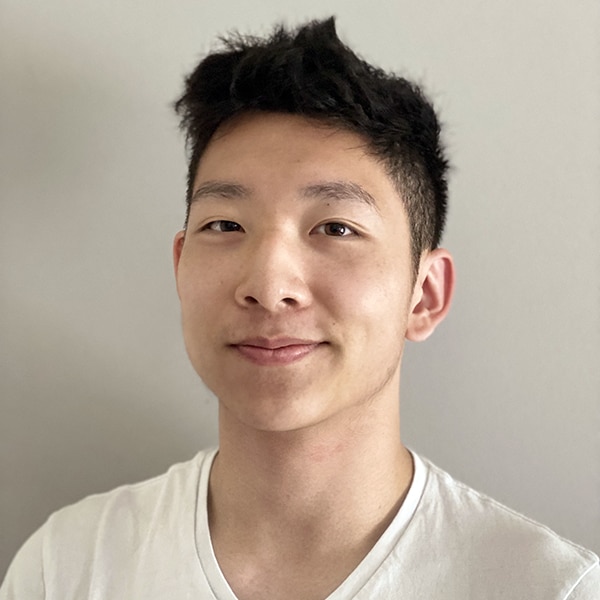
Dion Li discovers electromagnetic shock phenomenon omitted from Ramo-Shockley theorem
The Engineering Physics student was published in IEEE Transactions on Plasma Science.

The Engineering Physics student was published in IEEE Transactions on Plasma Science.

The Ramo-Shockley theorem, or Ramo’s theorem, is used to calculate the induced current on conductors caused by the motion of nearby charges. It has been widely used in vacuum and solid-state electronic devices, radiation detection and measurements, accelerator theory, discharge physics, and protein dynamics.
Dion Li, a junior in the Engineering Physics program, was introduced to Ramo’s theorem during a lecture given by NERS Prof. Y. Y. Lau to the Plasma, Pulsed Power, and Microwave Laboratory (PPML) community. Lau explained that there is no literature on an electromagnetic and relativistically correct version of the theorem, even though the classical theorem was over 80 years old.
Dion set out to fix this problem and began researching remotely at his California home and then his Ann Arbor apartment while U-M was under COVID-19 lockdown. Through his research, he was able to show for the first time how relativistic and electromagnetic effects modify the theorem with explicit, simple closed-form solutions.

In addition, Dion discovered that when a charged particle strikes a conducting surface and is then removed, an electromagnetic shock is generated—a phenomenon completely absent in the electrostatic approximation used in Ramo’s theorem.
Dion’s findings, “A Relativistic and Electromagnetic Correction to the Ramo-Shockley Theorem,” were recently published in IEEE Transactions on Plasma Science. Other authors on the paper include Lau and Dr. David Chernin, a senior scientist at Leidos, Inc.
Dion was honored with the Best Student Paper Award at the 2021 IEEE International Conference on Plasma Science (ICOPS) in September 2021. He was also given an American Physical Society Division of Plasma Physics (APS-DPP) travel award to attend the November 2021 APS-DPP annual meeting and present his research on Ramo’s theorem.
Originally from the San Francisco Bay Area, Dion began his freshman year at U-M in 2019. During his first semester, he took an introductory plasma physics course that covered glow discharge, a plasma formed by the passage of an electric current through a gas. Dion was inspired to create his own glow discharge but he would need an anode-cathode (AK) gap to contain the gas—so he built one using a cheap vacuum chamber that he found on eBay and a microwave transformer that he removed from a $10 Craigslist microwave.
“Seeing the beautiful orchid-colored plasma breakdown made the experiment worth it,” Dion said. His pursuit of a plasma physics education was born. By the fall 2020 semester, he was an instructional aide for NERS 471 (Introduction to Plasma Physics and Controlled Fusion). He is currently the grader for NERS 571 (Intermediate Plasma Physics I). Dion hopes to one day pursue a PhD in plasma physics and applied mathematics.
“I am extremely grateful for Prof. Lau, as none of my accomplishments would have been possible without his continued support, guidance, and patience,” said Dion. “I would also like to thank Dr. Chernin for his many contributions to the paper and Prof. Alec Thomas for useful discussions on computational plasma physics and for providing me with the simulation software used in this project. Finally, I would like to thank Profs. Ronald Gilgenbach and Ryan McBride for introducing me to the field of plasma physics and the cutting-edge research offered by U-M.”
“Dion’s accomplishments are remarkable—an amazing feat for anyone, let alone someone in the midst of their undergraduate education,” said Prof. McBride. “I am proud to have had Dion in my class and as a member of the PPML working with Prof. Lau. I look forward to seeing what he can accomplish in the future!”
“I am deeply impressed with Dion’s work,” said Prof. Thomas. “Completing an original, published research paper requires hard work, ingenuity, and creativity and he is unusually advanced to have been able to do this. I am delighted to have the opportunity to work with him.”
“Dion’s performance has been remarkable in both research and as an instructional assistant,” said Prof. Gilgenbach. “His accomplishments are even more impressive considering that he is still an undergraduate student. Dion has a very bright future in the field of plasma physics and fusion.”